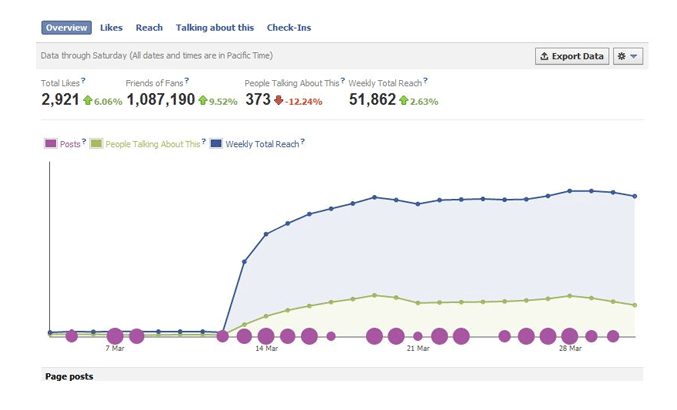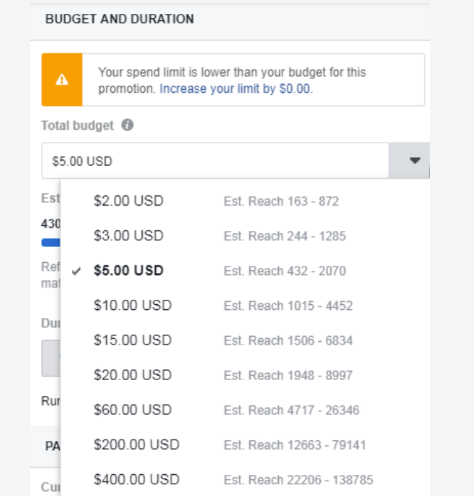With more than 2.4 billion active users globally, Facebook presents a unique opportunity for brands to connect, engage and even change the perceptions of consumers from the comfort of their own desk.
Conquer Facebook marketing
Download our cheat sheet and become a social media guru
GET YOUR COPY ifp.ClickDetails"Social platforms like Facebook, Twitter, and LinkedIn have developed their policies and interfaces to improve usability, while also making the most of the advertising potential each site offers.
This is why large businesses have developed expensive marketing strategies to make the most of their investment in social marketing. While this may be intimidating for smaller companies, with a little patience and time, you can also make the most of the marketing opportunities on Facebook.
Our Facebook marketing cheat sheet will give you all the basics you need to get started, and help you avoid getting your brand into hot water.
Boosting Facebook posts
Understanding how to effectively promote certain content on Facebook is one of the most important parts of a social media marketing campaign. By applying a set budget to paid advertising posts, your content will be pushed out by Facebook to your target audience.
The decline of organic reach has left many brands struggling to achieve their desired engagement and ROI levels. Boosting posts can also help you reach new users, as well as increasing your performance with your current followers.
'Boost post' should be an available function on any piece of content you share on Facebook and allows you to access further controls, such as budget, target audience and the length of time you want to promote it for. You can choose to do it either when you first create a post or at a later date to further push content out to your audience.
Marketers can then view the analytics dashboard Facebook Insights, which allows you to see an overview of any promoted posts and the performance of individual content. This also gives you insight on how effective your Business page is being with its target audience.
The Overview gives you a quick snapshot of the recent activity on your Page over the last seven days. It focuses on three areas:
- Page Likes: Total and new likes for your Page
- Post Reach: Total number of unique people who were shown your Page and posts
- Engagement: Total number of unique people who engaged with your Page, as well as different engagement types
This information can then be further broken down into:
- Likes: Daily page likes, net likes (the number of likes minus any unlikes), like location (geographical data about the users who liked your post)
- Reach: Post reach (organic and paid), likes, comments and shares, total reach
- Visits: Page and tab visits (number of times each of your Page tabs was viewed), external referrers (number of times people came to your Page from a third-party website)
- Posts: Time of engagement, post type
- Video: Video views, top videos
- People: Demographic data about your fans, people reached, people engaged
This information should give you the data you need to better target consumers via Facebook, and understand which posts may benefit from being promoted.
The cost of Facebook marketing
Unlike other areas of paid advertising, you essentially set your own budget, instead of paying per click or for prime advertising space. The minimum is $1 per day but the more you pay, the more reach you'll get from the post.
Facebook will provide you with an estimated reach number for the criteria you've set. This should help you balance the investment you're happy to make for the potential return you'd get. You can easily adjust the parameters of your promoted posts before you pay the budget amount so there's no harm in playing around with the criteria for your posts to see where your budget will be most effective.
How to connect with consumers on Facebook
Making small changes to elements of your Facebook Page, such as updating your cover photo, can help you achieve your marketing goals. For example, this banner space can be used to promote a short-time offer or the hero piece of content in your latest campaign. This above-the-fold space should be utilized to ensure it's making the most impact with your audience.
Brands shouldn't be afraid to engage in conversations with users, especially if they're presenting problems. This can be by directly addressing their issue if it's something related to your brand or by curating and creating content that solves a pain point. These can all help build your online community.
It's likely that you already have an idea of who your potential customers are - what age they are, what their jobs are, what social networks they use etc. - but it's also good to align this with the data you get from Facebook Insights.
Better targeting
Now you have the insights to better target posts, making any investment - whether financial or in time - more effective. Using Facebook’s Ad Creation tool, you can make your own adverts and maintain control over who you want to see them by selecting the Audience option. Click the More Demographics button for ultimate control, meaning you can push your ads to people with specific interests, of a certain age or in a specific location.
Learn more: How to Optimize Facebook Ads (And Drive Conversions)
You can other use these features to run tests on whether certain types of content are more popular than others or if posts sent out at certain times perform better. This means you can constantly evolve your marketing strategy to get the most from Facebook for your business.
Create custom audiences
One of Facebook's more recent features allows businesses to create Custom Audience segments, making it easy to share content with people who you've already identified share one key quality. Whether it's that they earn over $XXXXXX per year, are engaged, or live in a certain area, Custom Audiences is a great way to target consumers but also filter them out.
For example, if you know some of your audience are existing customers, you may not want to include them in a marketing campaign focused on brand awareness. You can also use this feature to aid community management with your audience by creating advocacy among users that have been identified as repeat consumers. These steps help you make the most of your marketing budget and ensure your social media strategy is effective.
How to use Facebook for better remarketing
One of the most invaluable parts of marketing on Facebook is retargeting; showing an ad to someone who’s already visited your website. The reason for this is simple: over 75% of users who put an item in an online shopping cart end up leaving the site without making a purchase.
These can be the easiest customers to persuade, because they clearly want what you’re selling; they wouldn’t have put it in their cart otherwise. By retargeting them with an ad, you can bring them back and convince them to complete their purchase.
This is a proven strategy and has been found to increase website search queries by over 1,000%. What’s more, users tend to react positively to it, with 30% of people who noticed ad retargeting feeling good about it compared to just 11% who felt negatively.
All you need is your Facebook Pixel code. You can use this to place a single pixel on your webpage that Facebook can use to tell who has visited. This opens up a new targeted audience for you: people who have already been to your site. You can also modify this field for any other targeting criteria.
It’s also worth thinking about how you reach people with your retargeting. For example, you’ll probably want to take a different approach to engage users who visited your site yesterday compared to those who visited the last month. As with any ad campaign, measure and test to see what works and you’ll have the best chance of success.
How to create content that stands out
None of your marketing efforts will matter if you can’t create an ad - or any other piece of content - that stands out to users. While research varies on the actual figure, many marketers work on the basis that you have approximately 3 seconds to grab someone’s attention on Facebook; after that, they’re gone.
So, how do you go about doing this? There are a number of different approaches you can consider. For example, connections planner at Facebook Peter Buckley believes relevance is one of the most important factors, and says the best way to achieve this is to have empathy for your audience.
In many ways, the steps you’ll take to develop this are the same you’ll take when creating a targeted ad: the first is to determine your audience. However, you’ll need to go one step further than simply working out who they are, where they live and what their interests are; you need to understand what their pain points are, and what they’re looking to do in order to improve their lives.
A more simple approach is to include eye-catching visuals. Something as simple as adding an image to a Facebook post can boost engagement 230%, because humans tend to react better to pictures than just words on their own. Images also help with retention, as we remember 65% of information presented as a picture compared to just 10% of what we hear.
Learn more: How to Increase Your Facebook Engagement by 330%
Also consider when you post. There are a variety of different studies that all seem to claim something different, with some saying the best time is between 1pm and 3pm on a Thursday and Friday and some saying it’s better to focus on off-peak times for more engagement.
In truth, the answer depends entirely on your audience and your goals. For example, if you’re trying to target teenagers, they might be online well into the early hours of the morning, whereas office workers will often use Facebook during their lunch breaks. The key is to have a good knowledge of who you’re targeting if you want to have the best chance at success.
Facebook marketing is an evolving process
It's important for brands to remember that it's extremely unlikely you'll strike gold with your first attempt. The most effective marketing strategies are built over time by testing different techniques and finding what works and - often more valuably - what doesn't. This will help you develop a digital marketing strategy that targets consumers who can benefit from your brand and will organically convert.
Access the latest business knowledge in Marketing
Get Access









Comments
Join the conversation...